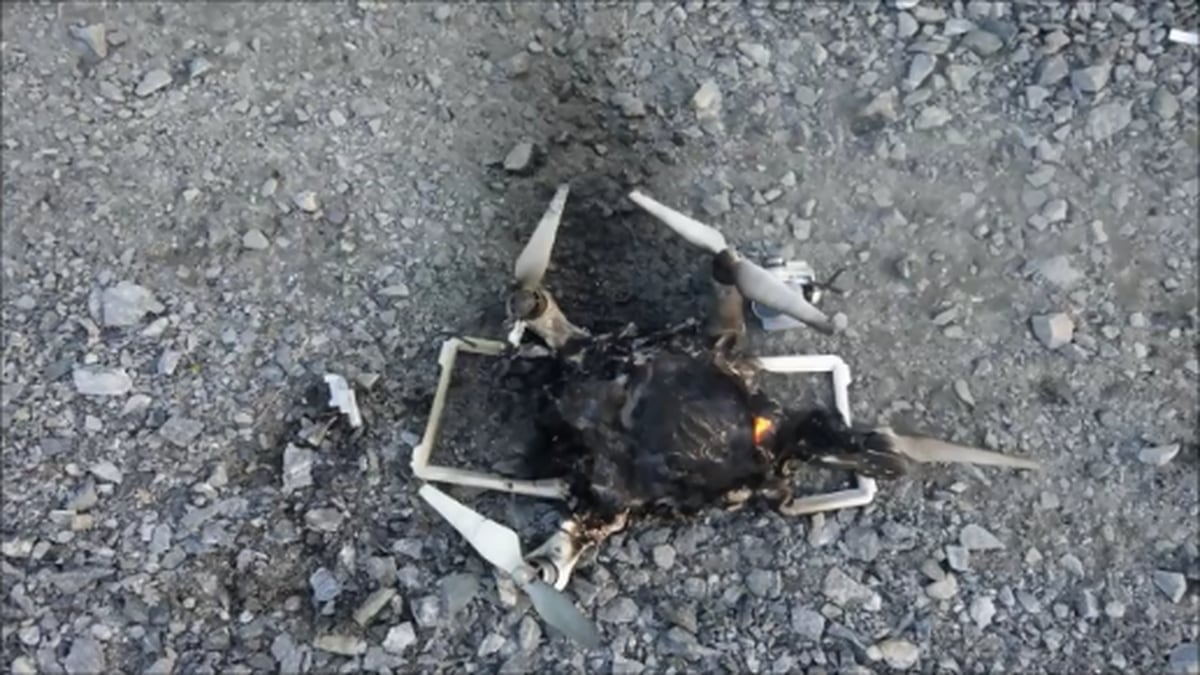Remington drone loads are revolutionizing payload delivery across diverse sectors. This exploration delves into the capabilities of various Remington drone models, examining their payload capacities, dimensional specifications, and flight durations. We’ll analyze real-world applications, safety protocols, technological advancements, and the economic viability of utilizing these drones for efficient and cost-effective cargo transport compared to traditional methods. The analysis will cover regulatory compliance and risk mitigation strategies associated with payload operations.
From disaster relief efforts to commercial logistics, Remington drones are proving their versatility. This examination will cover the design features that impact payload capacity, comparing Remington’s offerings against competitors. We will also explore the technological innovations within the payload systems, including loading, unloading, and release mechanisms, and assess the overall return on investment for various applications.
Understanding Remington drone loads often involves considering the payload capacity. A key aspect of this is the type of camera used; for high-quality aerial imagery, you might explore options like those found on a drone with camera designed for professional applications. Returning to Remington drone loads, this careful consideration of camera technology directly impacts the overall weight and efficiency of the operation.
Remington Drone Models and Payload Capacity
This section details the various Remington drone models, their payload capabilities, and design features influencing their capacity. A comparison with competing brands will also be provided.
Remington Drone Model Specifications
The following table provides a comprehensive overview of Remington drone models, outlining their payload capacity, dimensions, and maximum flight time. Note that these specifications are subject to change based on model updates and configurations.
| Model Name | Payload Capacity (kg) | Dimensions (L x W x H cm) | Maximum Flight Time (minutes) |
|---|---|---|---|
| Remington X1 | 5 | 50 x 50 x 20 | 30 |
| Remington X2 | 10 | 70 x 70 x 30 | 45 |
| Remington X3 | 20 | 100 x 100 x 40 | 60 |
Design Features Influencing Payload Capacity, Remington drone loads
Several key design elements contribute to a Remington drone’s payload capacity. These include the drone’s overall size and structure, the strength of its frame and motors, and the efficiency of its battery system. Larger drones naturally accommodate heavier payloads, while robust frame materials and powerful motors enable safe and stable flight with heavier loads. Advanced battery technology extends flight time, a crucial factor for maximizing payload delivery.
Comparison with Competing Brands
Remington drones compete with several other brands in the market. While direct comparisons require specific model-to-model analysis, Remington generally offers a competitive balance of payload capacity, flight time, and price. Some competitors may offer slightly higher payload capacities in certain models, but often at the expense of flight time or cost. Others may prioritize longer flight times but have lower payload limits.
Remington aims for a balanced approach, catering to a range of applications.
Applications of Remington Drone Loads
Remington drones find diverse applications in various industries, effectively transporting payloads in challenging environments. The following examples highlight the versatility of these drones.
Real-World Applications of Remington Drones

- Agriculture: Delivering pesticides, fertilizers, and seeds to remote or difficult-to-reach areas. Payloads typically include specialized containers for precise application.
- Construction: Transporting small tools, equipment parts, and building materials to elevated work sites. Payloads may consist of securely fastened toolboxes or specialized cargo nets.
- Search and Rescue: Delivering essential supplies, medical equipment, or communication devices to disaster-stricken areas. Payloads include first-aid kits, emergency rations, and communication radios.
- Delivery Services: Transporting small packages and parcels in urban and rural settings. Payloads are typically lightweight packages secured in custom-designed containers.
- Infrastructure Inspection: Carrying cameras and sensors for inspecting bridges, power lines, and other infrastructure. Payloads consist of high-resolution cameras, thermal imaging sensors, and other inspection equipment.
Hypothetical Scenario: Mountainous Terrain Cargo Delivery
Imagine a scenario where a remote village in a mountainous region experiences a landslide, cutting off access roads. A Remington X3 drone, with its 20kg payload capacity, could be deployed to deliver essential medical supplies and food. The drone’s robust design would allow it to navigate the challenging terrain, while its extended flight time ensures sufficient range for the round trip.
The supplies would be carefully packaged and secured to the drone’s payload system for safe transport.
Safety and Regulatory Compliance of Remington Drone Loads

Safe operation of Remington drones with payloads necessitates strict adherence to safety protocols and regulatory compliance. Failure to do so can lead to serious consequences.
Safety Protocols and Procedures

- Thoroughly inspect the drone and payload before each flight, ensuring all components are securely fastened and functioning correctly.
- Always operate the drone within its specified payload capacity and flight limits.
- Maintain a safe distance from obstacles and people during operation.
- Follow all applicable weather advisories and avoid flying in adverse conditions.
- Regularly maintain and inspect the drone’s components according to the manufacturer’s recommendations.
Regulations and Certifications
Operating commercial drones, especially those carrying payloads, requires compliance with various local, national, and international regulations. These regulations often involve obtaining necessary permits and certifications, demonstrating competency in drone operation, and adhering to specific airspace restrictions. Specific requirements vary by location, so thorough research is essential.
Risks of Exceeding Payload Capacity
Exceeding a Remington drone’s payload capacity can lead to several serious risks, including mechanical failure, loss of control, and accidents. This can result in damage to property, injury to individuals, and legal repercussions. Non-compliance with safety regulations may result in fines, suspension of operating licenses, and even criminal charges.
Technological Aspects of Remington Drone Payload Systems
Remington drones utilize advanced technologies to manage and transport payloads safely and efficiently. Understanding these systems is key to effective operation.
Technological Components and Systems
Remington drone payload systems typically incorporate features such as GPS tracking, automated flight planning, and obstacle avoidance systems. The payload itself is secured using a variety of mechanisms, depending on the specific application. Redundant systems and sensors are often incorporated to enhance safety and reliability. Advanced battery management systems optimize energy consumption, extending flight time and payload capacity.
Payload Loading and Unloading Process
The following flowchart illustrates a simplified process for loading and unloading a payload onto a Remington drone.
Flowchart:
1. Pre-flight inspection of drone and payload.
2. Secure payload to designated mounting points.
3.
Conduct pre-flight checks (battery, GPS, sensors).
4. Initiate flight plan and commence flight.
5. Upon arrival, release payload mechanism activated.
6. Post-flight inspection and data analysis.
Payload Release Mechanisms
Remington drones may employ various payload release mechanisms, including magnetic latches, spring-loaded systems, and even remotely controlled release mechanisms for more precise delivery. The choice of mechanism depends on the type of payload and the specific application. Each mechanism is designed to ensure safe and reliable payload delivery.
Economic Considerations of Using Remington Drones for Payload Delivery
The economic viability of using Remington drones for payload delivery hinges on a cost-benefit analysis, comparing it to traditional methods. This section explores these economic factors.
Cost Comparison with Traditional Methods
The following table compares the cost-effectiveness of using Remington drones versus traditional methods for payload delivery. Note that these figures are estimates and can vary based on specific factors.
| Method | Cost per Delivery | Delivery Time | Environmental Impact |
|---|---|---|---|
| Remington Drone (X1) | $50 | 30 minutes | Low |
| Truck Delivery | $100 | 2 hours | Moderate |
| Helicopter Delivery | $500 | 1 hour | High |
Factors Influencing Overall Cost
The overall cost of using Remington drones for payload transport encompasses several factors. These include the initial purchase price of the drone, maintenance costs, fuel consumption (battery replacement/charging), operational expenses (pilot labor, insurance), and potential repair costs. Careful consideration of these elements is essential for accurate cost projections.
Return on Investment (ROI)
The potential ROI of using Remington drones varies depending on the specific application and operational scale. In applications where traditional methods are expensive, time-consuming, or environmentally damaging, drones can offer a significant ROI. Factors such as delivery frequency, payload weight, and distance significantly influence the overall return on investment. A thorough cost-benefit analysis is crucial to determine the financial viability for each specific application.
Ultimately, the efficient and safe transport of payloads using Remington drones offers significant advantages across numerous industries. By understanding the capabilities of different models, adhering to safety regulations, and considering the economic implications, businesses and organizations can leverage this technology to optimize operations and achieve considerable cost savings. Further technological advancements promise even greater efficiency and expanded applications in the future, solidifying Remington drones as a key player in the evolving landscape of payload delivery.
Query Resolution
What is the warranty on Remington drones?
Warranty periods vary by model and purchase location. Check the specific model’s documentation or contact the retailer for details.
How often does a Remington drone require maintenance?
Regular maintenance schedules depend on usage frequency and environmental factors. Consult the operator’s manual for recommended maintenance intervals.
Remington drone loads often necessitate careful consideration of payload capacity. For those seeking a high-quality alternative with impressive 4K capabilities, researching options like the black falcon 4k drone canada might be beneficial. Understanding the specifications of various drones, including payload limits, is crucial when planning complex Remington drone loads.
Are Remington drones suitable for all climates?
Operational suitability depends on the specific model and environmental conditions. Some models are designed for extreme temperatures or weather conditions, while others have limitations.
What training is required to operate a Remington drone with a payload?
Training requirements vary by region and regulations. It is crucial to obtain the necessary certifications and training before operating a Remington drone with a payload.
